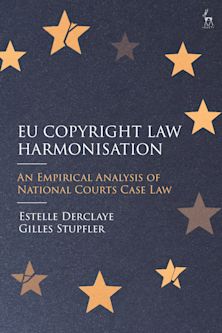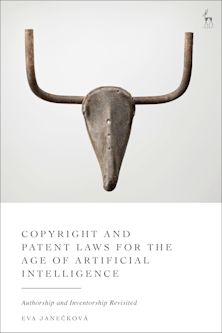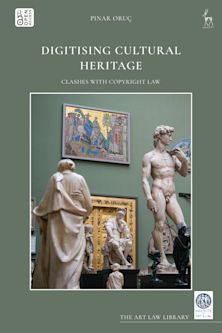- Home
- ACADEMIC
- Law
- Intellectual Property Law
- The Legal Concept of Art
The Legal Concept of Art
This product is usually dispatched within 1 week
- Delivery and returns info
-
Free US delivery on orders $35 or over
You must sign in to add this item to your wishlist. Please sign in or create an account
Description
In this analysis of the regulation of art by law, Dr. Kearns has produced an innovative treatise with both practical and jurisprudential implications. He examines the treatment of art within seven distinct traditional legal subjects, namely obscenity law, copyright law, libel law, the public funding of art, the law of charitable trusts, customs law and the law on the movement of national treasures, identifying in each the specialised problems law faces, not least given the lack of a universally acceptable definition of art. Based primarily on English law, the text achieves an added richness by a comparative dimension including French, American and European Union Law. In this way a unitary idea of how law tackles its operation on art is achieved. This is the first monograph on the holistic treatment of art law in the United Kingdom.
Table of Contents
2. The Judicial Approach to Art
3. Artistic as a Category and Criterion
4. The Concept of Art in Defamation Law
5. The Public Funding of Art
6. The Concept of Art in the Anglo-American Law of Trusts
7. The Conceptualisation of Art in its International Movement
8. Art and the Customs Law of the European Union and America
9. A Short Miscellany
10. Some General Conclusions
Product details
| Published | Oct 19 1998 |
|---|---|
| Format | Hardback |
| Edition | 1st |
| Extent | 304 |
| ISBN | 9781901362503 |
| Imprint | Hart Publishing |
| Dimensions | 9 x 6 inches |
| Publisher | Bloomsbury Publishing |
About the contributors
Reviews
-
The book under review is a first. It addresses the relationship between the law of three jurisdictions (England, France and the USA) and art (including literature) and inaugurates a doctrinal and theoretical field which has been neglected in English Scholarship... Its main achievement lies in bringing together disparate areas of law dealing with art, and in suggesting that the concept of art should acquire juristic value and lead to doctrinal modifications in civil and criminal law... Offering a cogent argument for turning art into such a concept, which would cut across substantive classifications and procedural distinctions, is an important contribution to scholarship and policy.
Costas Douzinas, Legal Studies


































